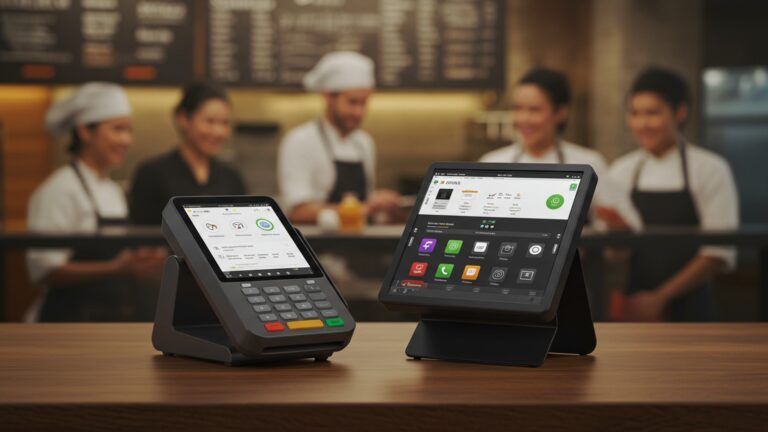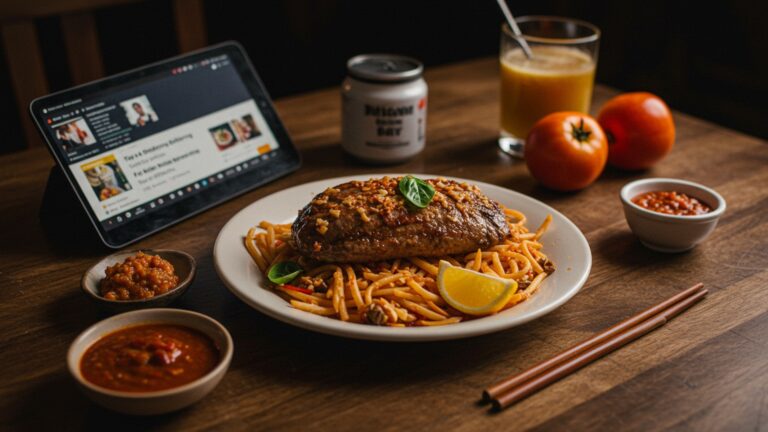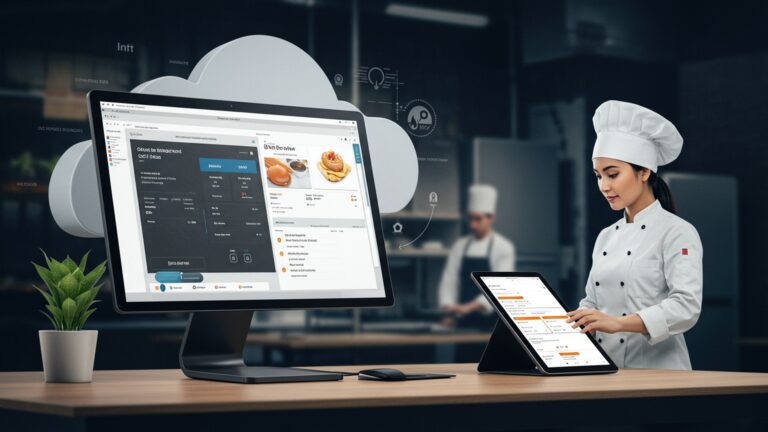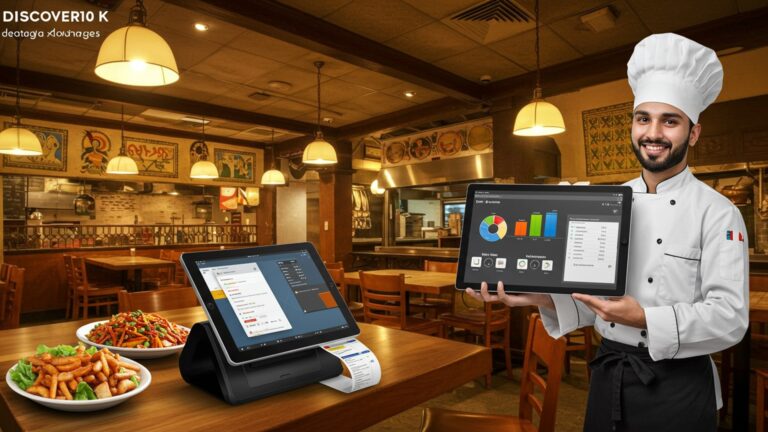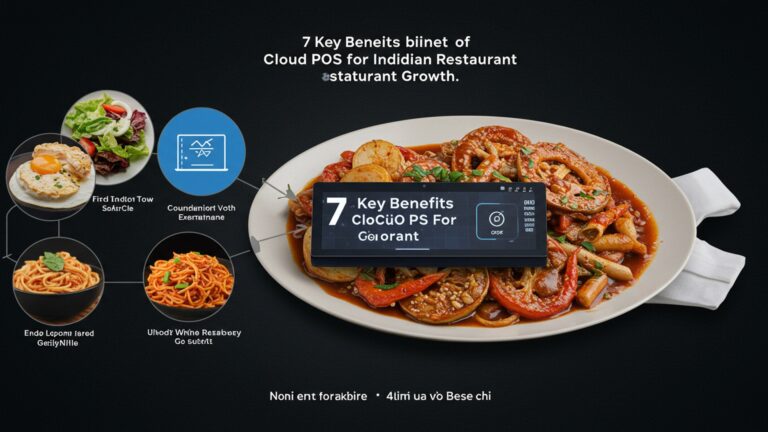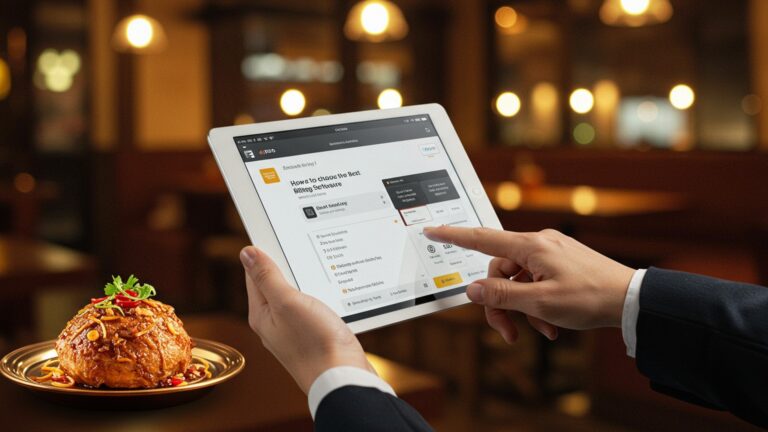10 Essential Android POS Features for Indian Restaurants to Boost Efficiency
The bustling ecosystem of Indian restaurants, from vibrant street-food joints to fine-dining establishments, increasingly demands operational precision to thrive. Traditional manual processes often buckle under the pressure of peak hours, complex order customizations. the surge in digital payments like UPI and integrated online delivery platforms. A cutting-edge Android POS for restaurants India transcends mere billing, evolving into an indispensable operational backbone. Modern systems integrate seamlessly, offering features like real-time inventory management, advanced table booking. comprehensive analytics. This shift boosts service speed, minimizes order inaccuracies. provides valuable insights into customer preferences, fundamentally transforming a restaurant’s efficiency and guest experience in today’s dynamic culinary landscape.
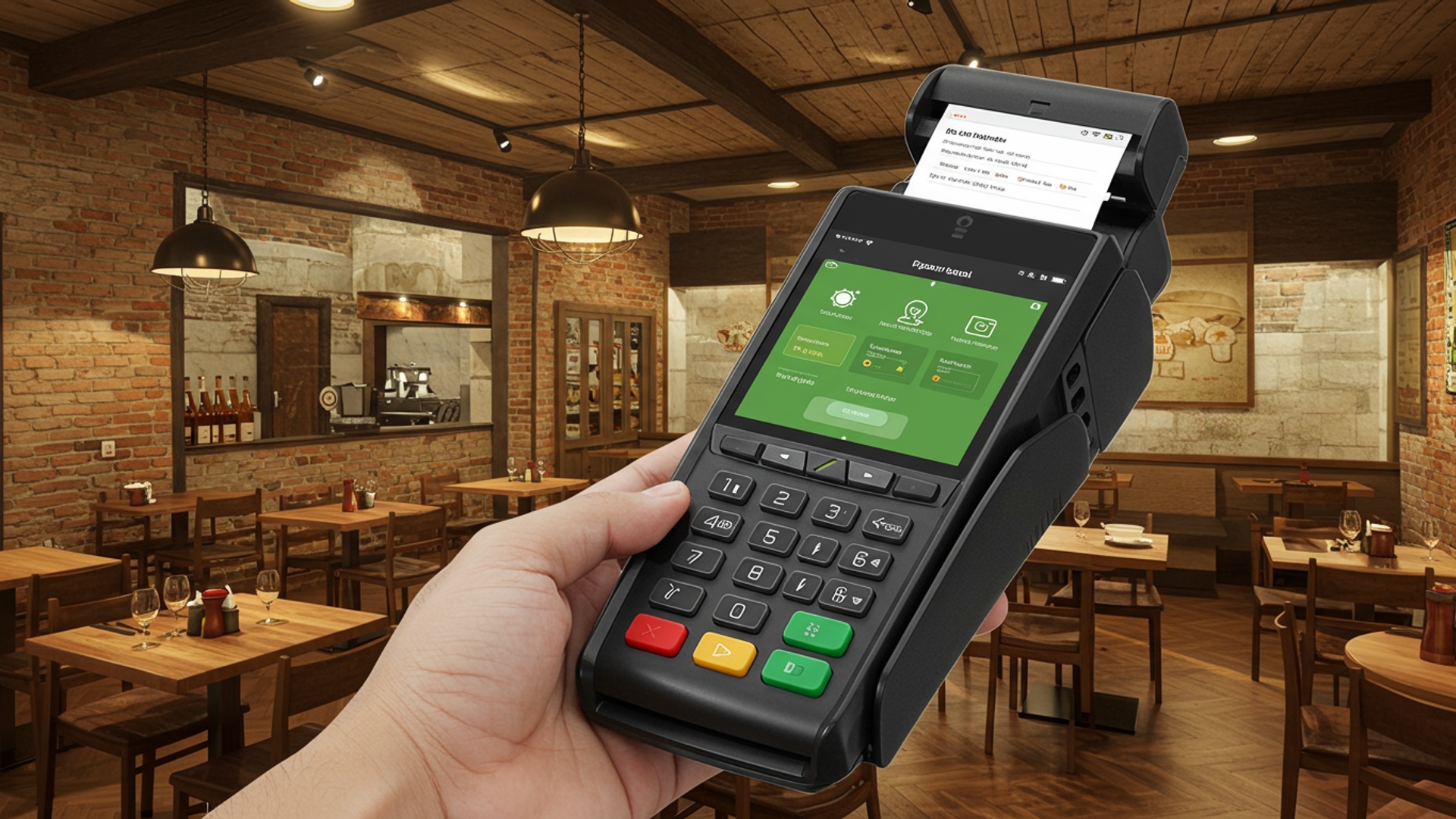
1. Intuitive Order Management & Kitchen Order Ticket (KOT) System
At the heart of any bustling Indian restaurant is the flow of orders from the customer’s table to the kitchen. An intuitive order management system within an Android POS for restaurants India is paramount. This feature streamlines the entire ordering process, reducing errors and speeding up service.
- Digital Order Taking
- Automated KOT Generation
- Order Tracking
Waitstaff can take orders directly on an Android tablet or smartphone, which instantly relays the insights to the kitchen. This eliminates handwritten slips that can be misplaced or misread. For an Indian restaurant, where dishes often have specific spice levels (e. g. , “medium spicy butter chicken”) or modifications (e. g. , “no onion, no garlic dal makhani”), the system allows for precise entry of these details.
As soon as an order is placed, the system automatically generates a Kitchen Order Ticket (KOT) and sends it to the relevant kitchen sections (e. g. , tandoor, curry station, beverage counter). This ensures that each part of the order begins preparation without delay. Consider a busy Friday night at an Indian eatery; without this automation, the kitchen could quickly become chaotic.
The system provides real-time updates on order status, allowing staff to monitor preparation progress and inform customers accurately about waiting times. This is especially useful for managing expectations during peak hours.
Imagine a customer at “Spice Route Bistro” orders a complex meal with multiple starters, main courses. breads. The waiter uses an Android tablet, selecting specific modifiers for each dish. The KOTs are instantly printed in the tandoor for the naan, the main kitchen for the curries. the bar for the drinks. This prevents delays and ensures the entire meal arrives fresh and as ordered.
2. Efficient Table Management & Reservation System
Managing seating effectively is crucial for maximizing an Indian restaurant’s revenue, especially during peak dining hours. A robust table management and reservation system integrated into an Android POS for restaurants India simplifies this complex task.
- Visual Table Layout
- Reservation Handling
- Table Status Updates
- Waitlist Management
This feature presents a graphical representation of your restaurant’s floor plan on the Android device. Staff can see which tables are occupied, vacant, or reserved at a glance. For an Indian restaurant, which might have various seating arrangements from small couple tables to large family-style seating, this visual aid is invaluable.
Seamlessly manage incoming reservations, assign tables. track guest arrivals. The system can send automated reminders to customers, reducing no-shows, a common challenge for popular Indian eateries.
Easily change a table’s status from “occupied” to “dining” to “bill requested” to “vacant,” ensuring a smooth transition for new guests. This helps in quick table turnover, directly impacting revenue.
During busy periods, a digital waitlist allows staff to add customers, estimate waiting times. notify them when their table is ready. This professional approach enhances customer experience and reduces perceived wait times.
By leveraging this feature, restaurant managers can optimize seating, minimize customer waiting times. improve overall operational flow, leading to higher customer satisfaction and increased table turns.
3. Comprehensive Inventory Management
For Indian restaurants, managing a diverse array of ingredients – from exotic spices and fresh vegetables to various flours and dairy products – can be a logistical challenge. An Android POS with robust inventory management is a game-changer for these establishments in India.
- Ingredient Tracking
- Recipe Management
- Supplier Management
- Waste Reduction
Automatically track the consumption of ingredients with every dish sold. This feature alerts you when stock levels are low for critical items like basmati rice, paneer, or specific masalas, preventing last-minute rushes or dish unavailability.
Input detailed recipes for each dish, including ingredient quantities. The POS can then deduct ingredients accurately from stock as dishes are sold. This is vital for maintaining consistent taste and controlling portion sizes across multiple chefs.
Keep records of your suppliers, order history. pricing. Some advanced systems can even automate reordering based on predefined thresholds.
By accurately tracking inventory, restaurants can identify fast-moving vs. slow-moving items, reduce spoilage. minimize waste, which directly impacts profitability.
“Curry House,” a popular Indian restaurant in Mumbai, struggled with inconsistent stock levels of specialty spices. After implementing an Android POS for restaurants India with strong inventory features, they found their supply chain became more predictable. They reduced waste by 15% in the first quarter and never ran out of popular ingredients during peak hours, significantly improving customer satisfaction.
4. Integrated Billing & Diverse Payment Processing
In the rapidly evolving digital payments landscape of India, an Android POS that offers flexible and secure billing and payment options is non-negotiable. This goes beyond just accepting cash or cards.
- Split Billing & Custom Discounts
- Multi-Payment Gateway Support
Indian dining often involves large groups wanting to split bills or apply specific discounts (e. g. , corporate deals, loyalty points). The POS should easily handle these complexities, allowing splitting by item, by person, or by custom percentages.
Critically, an Android POS for restaurants India must support a wide range of payment methods prevalent in the country.
| Payment Method | Description | Benefit for Indian Restaurants |
|---|---|---|
| UPI (Unified Payments Interface) | Real-time payment system developed by NPCI, allowing instant bank-to-bank transfers via mobile apps (e. g. , Google Pay, PhonePe, Paytm). | Most popular digital payment method in India. Offers quick, secure. direct payments, reducing cash handling and card machine reliance. |
| Credit/Debit Cards | Traditional card payments via swipe, chip, or tap. | Still widely used, especially by tourists and for larger transactions. POS integration ensures seamless processing. |
| Digital Wallets | Mobile apps where users store money (e. g. , Paytm Wallet, Amazon Pay, MobiKwik). | Convenient for smaller transactions and often come with promotional offers, attracting budget-conscious customers. |
| Net Banking | Direct bank transfers initiated from a banking portal. | Useful for larger transactions or corporate clients who prefer direct transfers. |
| Cash | Physical currency. | Still a significant payment method in India, especially in smaller towns or for quick transactions. POS helps track cash flow accurately. |
- GST Compliance
The billing system must be fully compliant with India’s GST (Goods and Services Tax) regulations, automatically calculating and applying the correct tax rates to menu items. This ensures accurate financial reporting and avoids penalties.
Payment gateway integration often involves APIs (Application Programming Interfaces). For example, a POS might use a payment gateway’s API to securely process a UPI transaction.
// Conceptual API call for initiating a UPI payment
POST /api/v1/payments/initiate Request Body:
{ "amount": 550. 75, "currency": "INR", "payment_method": "UPI", "customer_id": "CUST123", "order_id": "ORD456", "callback_url": "https://yourrestaurant. com/payment_status"
}
This allows the POS to communicate with payment processors like Razorpay or PayU to handle the transaction securely.
5. Customer Relationship Management (CRM) & Loyalty Programs
Building a loyal customer base is essential for the long-term success of any restaurant. An Android POS for restaurants India that incorporates CRM and loyalty features can significantly enhance customer engagement.
- Customer Databases
- Loyalty Programs
- Personalized Marketing
- Feedback Collection
Automatically capture customer data (name, contact details, visit history) when they make a reservation or place an order. This data is invaluable for personalized marketing.
Implement points-based systems, tiered memberships, or special discounts for repeat customers. For instance, an Indian restaurant could offer a free dessert after five visits or a percentage off on birthdays.
Use customer data to send targeted promotions. If a customer frequently orders vegetarian thalis, send them a promotion on your new vegan curry. This direct communication fosters a sense of appreciation.
Integrate options for customers to provide feedback directly through the POS or via automated messages after their visit. This helps in continuous improvement and addressing issues promptly.
By understanding your customers better and rewarding their loyalty, you can significantly increase repeat business, which is often more cost-effective than acquiring new customers.
6. Flexible Menu Customization & Modifiers
Indian cuisine is incredibly diverse, with dishes often requiring specific preparations or variations. An effective Android POS for restaurants India must offer robust menu customization capabilities to handle this complexity.
- Dynamic Menu Creation
- Dish Modifiers
- Spice levels: “Mild,” “Medium,” “Spicy” for curries.
- Add-ons: “Extra paneer,” “Add chicken,” “With garlic naan.”
- Dietary restrictions: “No nuts,” “Vegan option,” “Gluten-free.”
- Preparation notes: “Crispy,” “Less oil,” “Well-done.”
- Combo Meals & Thalis
Easily add, update, or remove menu items, prices. descriptions in real-time. This is crucial for daily specials, seasonal menus, or adjusting prices based on ingredient costs.
This is a critical feature for Indian restaurants. It allows servers to add specific instructions to dishes, such as:
These modifiers ensure that the kitchen receives precise instructions, reducing errors and ensuring customer satisfaction.
Easily create and manage combo meals or traditional Indian thalis with multiple components, ensuring correct pricing and inventory deduction for each component.
A customer at “The Royal Spice” orders a Chicken Tikka Masala but requests it “extra spicy” and “with no cream.” The waiter selects the Chicken Tikka Masala from the Android POS menu and then quickly taps the “Extra Spicy” and “No Cream” modifiers. These specific instructions are then clearly printed on the KOT for the kitchen staff, preventing any confusion and ensuring the dish is prepared exactly as requested.
7. Comprehensive Reporting & Analytics
Data is the new gold. for an Indian restaurant, understanding sales trends, popular dishes. peak hours can significantly impact profitability. An Android POS for restaurants India should offer powerful reporting and analytics features.
- Sales Reports
- Inventory Reports
- Employee Performance Reports
- Peak Hour Analysis
- Customer Insights
Generate daily, weekly, monthly, or custom sales reports. review sales by dish, category, payment method, or even by server. This helps identify best-selling items (“Which biryani is most popular?”) and less popular ones.
Track ingredient consumption, identify waste. pinpoint discrepancies. This helps in optimizing procurement and reducing losses.
Monitor individual staff performance, including sales generated, tips collected. order accuracy.
Identify your busiest hours and days to optimize staffing levels, kitchen efficiency. marketing efforts. For an Indian restaurant, this might reveal a strong demand for lunch thalis or dinner buffets.
assess loyalty program effectiveness, popular dishes among loyal customers. average spend per customer.
Regular review of these reports can inform crucial business decisions, from menu engineering and pricing strategies to staff scheduling and marketing campaigns, ultimately boosting the restaurant’s bottom line.
8. Multi-Outlet Management (for Chains)
For Indian restaurant chains or those planning to expand, an Android POS for restaurants India that supports multi-outlet management is indispensable. This feature centralizes operations and provides a unified view across all locations.
- Centralized Menu Management
- Consolidated Reporting
- Unified Inventory Control
- Employee Data Management
Update menus, prices. promotions for all outlets from a single dashboard. This ensures consistency across all branches, which is vital for brand integrity.
Access aggregated sales, inventory. customer data across all locations. This allows owners to compare performance, identify top-performing outlets. make informed strategic decisions for the entire chain.
Manage inventory for all outlets centrally. This can facilitate bulk purchasing discounts and efficient stock transfers between branches, especially for unique Indian ingredients.
Maintain a centralized employee database, manage permissions. track performance across all locations.
“Dhaba Delight,” an Indian restaurant chain with five outlets across different cities, previously struggled with inconsistent menus and disparate sales data. Implementing an Android POS with multi-outlet capabilities allowed them to standardize their offerings, gain real-time insights into each branch’s performance. streamline their supply chain for common items like spices and staples.
9. Robust Offline Capability
Internet connectivity in some parts of India can be inconsistent, making offline capability a critical feature for an Android POS for restaurants India. This ensures uninterrupted service, even during network outages.
- Continuous Operation
- Automatic Data Sync
- No Downtime
The POS system continues to function normally (taking orders, printing KOTs, processing payments) even when the internet connection is lost. All transactions are stored locally on the Android device.
Once internet connectivity is restored, all stored data (orders, sales, inventory updates) automatically syncs with the cloud server. This ensures that no data is lost and all reports are up-to-date.
This feature prevents service disruptions, which can be costly and frustrating for both staff and customers during a busy lunch or dinner service. Imagine a packed Indian restaurant during a power cut. the internet goes down – offline POS keeps things moving.
Offline Capability refers to the ability of a software application or system to perform its core functions without an active internet connection, storing data locally and synchronizing it once connectivity is restored.
When choosing an Android POS, inquire specifically about its offline capabilities. A truly robust system will allow for seamless operation through short and even extended periods of internet unavailability.
10. Secure Staff Management & Role-Based Permissions
Managing a restaurant team, from waitstaff and chefs to cashiers and managers, requires clear roles and controlled access to sensitive insights. An Android POS for restaurants India with comprehensive staff management features enhances security and accountability.
- User Profiles & Logins
- Role-Based Permissions
- Waitstaff
- Cashier
- Manager
- Kitchen Staff
- Time & Attendance Tracking
- Performance Monitoring
Each staff member has a unique login, ensuring all actions are traceable to an individual. This includes order placement, discounts applied. cash handling.
Assign different levels of access based on job roles. For example:
Can take orders, print KOTs, request bills.
Can process payments, apply discounts, generate bills.
Has full access to all POS features, including reports, menu changes. employee management.
Can view KOTs, mark dishes as prepared.
This prevents unauthorized actions and reduces the risk of internal fraud.
Some advanced systems include features for staff clock-in/clock-out, simplifying payroll management and tracking work hours.
Link individual sales performance to staff logins, allowing managers to identify top performers and areas for improvement.
At “Biryani House,” a manager noticed an unusual number of discounts being applied. Using the POS’s staff management features, they traced the discounts to a specific cashier who was not authorized to offer them, addressing the issue promptly and preventing further losses. This level of oversight is crucial for maintaining financial integrity in a busy Indian restaurant environment.
Conclusion
Embracing the right Android POS features is not merely an upgrade; it’s a strategic pivot for Indian restaurants aiming for unparalleled efficiency and customer delight. By leveraging capabilities like seamless KOT management, integrated online ordering. real-time inventory tracking, you transform potential chaos into streamlined operations. For instance, imagine how quickly your kitchen can churn out Paneer Tikka orders when KOTs are instantly relayed to the right station, minimizing errors and wait times, especially during the dinner rush. My personal tip? Don’t just install; actively integrate your chosen POS with local payment methods like UPI and popular food delivery platforms. This isn’t just about convenience; it’s about meeting the evolving digital demands of today’s Indian diner. The current trend towards cloud-based Android POS solutions further empowers you with data-driven insights, allowing you to optimize everything from staffing to ingredient procurement. Choose a system that truly understands the unique pulse of an Indian restaurant, turning every transaction into an opportunity for growth and every meal into a memorable experience. Invest wisely. watch your restaurant not just survive. truly thrive in a competitive market.
More Articles
7 Essential Features Your Restaurant Billing Software India Needs to Thrive
Maximize Profit Learn 7 Smart Inventory Management Strategies for Indian POS
Master Selecting the Best POS Software in India Your Essential Guide
How to Select and Implement POS Software A Comprehensive Guide for Business Success
How to Choose the Best POS Software to Streamline Your Sales
FAQs
Why is an Android POS a smart choice for my Indian restaurant?
Android POS systems are often more budget-friendly and offer fantastic flexibility. They’re robust enough to handle the fast pace and diverse menu of Indian dining, making it easier to manage complex orders, quick billing. overall operations smoothly without a huge initial investment.
What are the absolute must-have features for an Indian restaurant’s POS system?
You’ll definitely want efficient order management, flexible menu customization (crucial for thalis and special requests), quick and accurate billing, table management, robust inventory control to track ingredients. possibly a Kitchen Display System (KDS) for smoother kitchen operations.
How can a POS specifically help with unique Indian menu items like thalis or customized spice levels?
A good Android POS offers deep menu customization and modifier options. This lets your staff easily add specific instructions like ‘less spicy,’ ‘extra garlic naan,’ or customize the components of a thali, ensuring every order is accurate and tailored to the customer’s exact preference.
My restaurant does a lot of home deliveries. Can an Android POS handle that effectively?
Absolutely! Many modern Android POS systems come with integrated delivery management. They can track online orders, assign delivery drivers, help optimize routes. even manage third-party delivery platform integrations, streamlining your entire take-out and delivery operation.
Is it complicated for my staff to learn and use this new system?
Not at all. Most Android POS systems are designed with user-friendliness in mind, often mimicking the familiar interface of a smartphone or tablet. With minimal training, your staff should be able to quickly navigate and use the system efficiently, reducing errors and speeding up service.
How does an Android POS help me manage my kitchen better and reduce food waste?
Key features like a Kitchen Display System (KDS) send orders directly to the kitchen, improving communication and speed. Integrated inventory management tracks ingredient usage, helps identify popular dishes. minimizes waste by optimizing stock levels and reducing spoilage.
Will investing in an Android POS actually save me money or just be another expense?
It’s an investment that typically yields significant savings. By reducing order errors, speeding up service, optimizing inventory. providing valuable sales data, an Android POS can boost efficiency, cut operational costs. ultimately increase your profits in the long run by making smarter business decisions.

